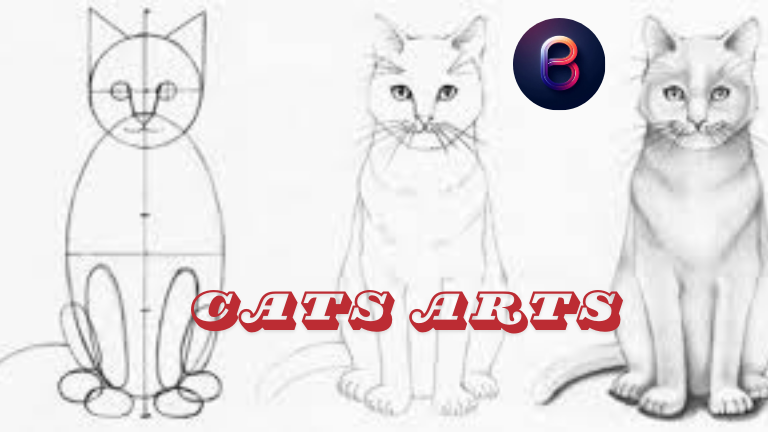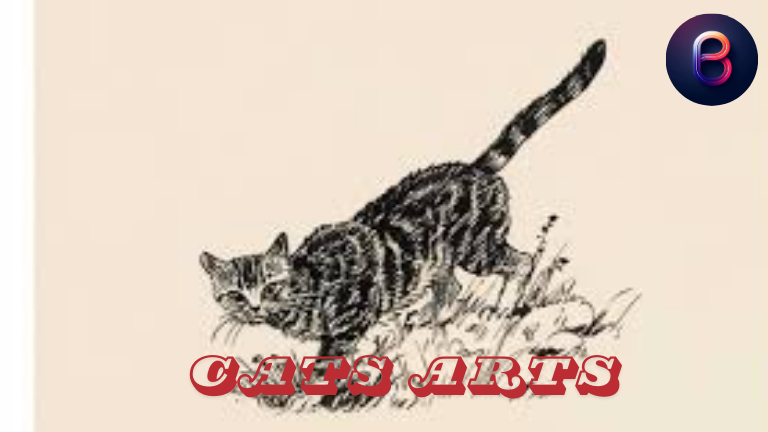Cats are fascinating creatures that many people adore. Whether they are playful kittens or elegant adults, their unique personalities and behaviors capture our hearts. In this guide, we will explore the world of drawing cats, helping you understand how to create amazing artworks of these furry friends. We’ll cover basic drawing techniques, fun facts about different cat breeds, and even some tips for making your drawings more realistic. So, grab your pencils and let’s dive into the wonderful world of drawing cats!
The Historical Context of Cats
Cats have been with us for thousands of years! They were first domesticated in ancient Egypt, where people admired their hunting skills. Cats helped control pests and were often treated like royalty. In many cultures, including Egypt and Japan, cats are seen as symbols of good luck and protection. This long history shows just how important cats have been to humans. Today, they are one of the most popular pets worldwide, loved for their playful nature and companionship.
Physical Characteristics of Cats
Cats come in many shapes and sizes. They can be small like a kitten or large like a Maine Coon! One important feature is their flexible body, which helps them climb and jump easily. Most cats have sharp claws, which they use for climbing and hunting. Each breed has unique features, such as fluffy fur, short noses, or bright blue eyes. Understanding these characteristics can help you draw cats more accurately and show their individuality.
Also Check: My Dog Ate Chocolate But Is Acting Fine: What to Do? 2024
Behavioral Traits of Cats
Cats are known for their playful and curious nature. They love to explore their surroundings and often play with toys or even your fingers! Cats communicate in many ways, using sounds like meows and purrs, and body language, like tail movements. Understanding how cats express themselves can make it easier to connect with them and create more realistic drawings. For example, a happy cat might have a raised tail and relaxed body, while a scared cat might crouch low with a puffed-up tail.

Drawing Techniques for Cats
Drawing cats can be a fun and rewarding experience! Start by sketching basic shapes, like circles and ovals, to create the cat’s body and head. Then, add details like the eyes, ears, and whiskers. Remember to pay attention to proportions—cats have long bodies and short legs! Once you have the outline, you can begin to add fur and shadows to give your drawing depth. Practice makes perfect, so don’t be afraid to try different poses and expressions to improve your skills!
Care and Maintenance of Cats
Taking care of a cat is important for their health and happiness. Cats need a balanced diet with the right amount of protein and nutrients. Fresh water should always be available! Regular grooming helps keep their fur clean and free of tangles. Don’t forget to schedule vet visits to check their health and get vaccinations. A happy, healthy cat will be more fun to draw and play with!
Emotional and Psychological Benefits of Owning Cats
Having a cat can make you feel good! Studies show that spending time with pets can reduce stress and improve your mood. Cats are great companions; they can cuddle with you on the couch or play with you in the yard. Their funny antics and loving purrs can brighten even the gloomiest day. Drawing cats can also be a wonderful way to express your love for these amazing animals while developing your artistic skills.
Also Check: Discover Hidden Gems and Adventures on Hoptraveler.com
FAQs
What materials do I need to draw cats?
You don’t need fancy supplies to start drawing cats! A simple pencil, eraser, and paper are enough. As you improve, you can experiment with colored pencils, markers, or digital tools to enhance your artwork.
How can I make my cat drawings look more realistic?
To make your cat drawings more realistic, study pictures of real cats. Pay attention to their fur patterns, body shapes, and facial expressions. Practice shading techniques to add depth and dimension, which will bring your drawings to life!
Conclusion
In this guide, we’ve learned so much about cats! From their rich history to their unique characteristics and behaviors, there’s a lot to appreciate. We hope this information inspires you to grab your pencils and start drawing your own feline friends. Remember, practice and patience are key to becoming a great artist. Enjoy your journey into the wonderful world of drawing cats!





